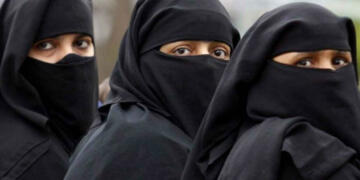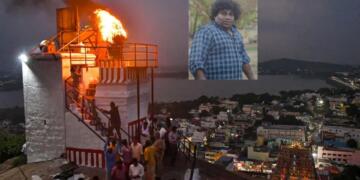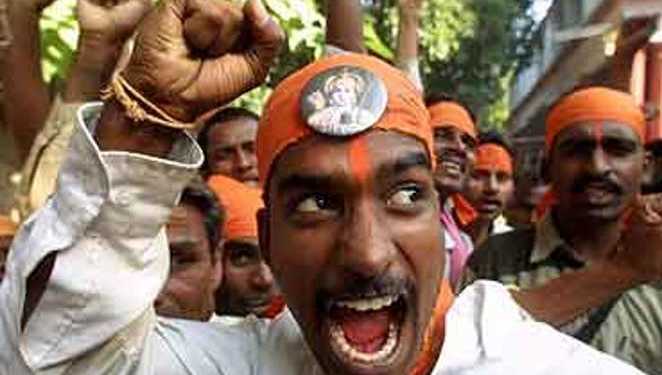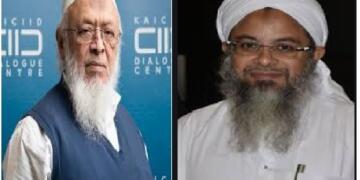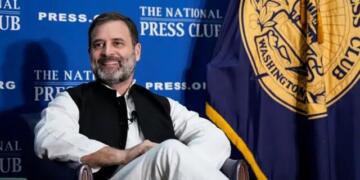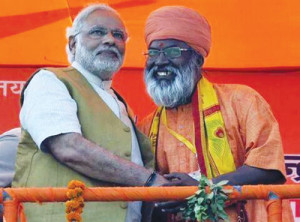 A concerted effort is being made to project India as an intolerant majoritarian state. This is a fairly new phenomenon which began around one year back, after Narendra Modi took over as prime minster. It is being carried out by the mainstream intelligentsia and the mainstream media. Systematic distortion and selective reportage have been the backbone of this effort. And yet there is a sharp decline in incidents of communal violence after the new regime took charge. The erstwhile Lutyens cozy club, in their blind hatred and amplifying vulnerability, have sought to paint Mr. Modi and his government with the same brush as the right wing fringe.
A concerted effort is being made to project India as an intolerant majoritarian state. This is a fairly new phenomenon which began around one year back, after Narendra Modi took over as prime minster. It is being carried out by the mainstream intelligentsia and the mainstream media. Systematic distortion and selective reportage have been the backbone of this effort. And yet there is a sharp decline in incidents of communal violence after the new regime took charge. The erstwhile Lutyens cozy club, in their blind hatred and amplifying vulnerability, have sought to paint Mr. Modi and his government with the same brush as the right wing fringe.
The same group of pseudo-secular pseudo-leftist crooks attempted the exact same thing after the 2002 riots in Gujarat. The electorate gave them a fitting answer, not once but three times. Recently the judiciary too joined in. Sanjiv Bhatt, the façade of this malicious campaign has been proclaimed ‘liar’ by the Supreme Court.
Those who follow the mainstream media are often under the impression that Mr. Modi’s rise has emboldened the fringe. This impression is easy to create because both Mr. Modi and the fringe are part of the Indian right wing. But the underlying assumption that whatever stands right of center ideologically is negative, emerges out of ignorance and misinformation. It is true that right-wingers in most countries are conservative religious nationalists. The difference in India though lies at the core of the religion itself, if we may call it a religion at all. Hinduism, often described as a way of life rather than a religion, holds liberality as its main value. The fringe which calls itself Hindu, distorts, misinterprets, and considers erstwhile social practices as what Hinduism truly is. Organizations like the RSS and the BJP, perhaps in keeping up with this liberality as collectivities, are made up of liberals, fanatics and people of every shade in between. Fortunately, those at the helm of the BJP have always been the liberal right wingers and none more so than Mr. Modi himself.
As chief minister of Gujarat in December 2007, Mr. Narendra Modi was attending a conclave hosted jointly by two leading media houses. This was at a time when the Indian mainstream had reached its peak of peddling untruth in the context of the Gujarat riots. In a question-answer session, veteran journalist Madhu Trehan asked him if he thought Muslims had any place in India. Though the question was just that, the implication was quite clear. Mr. Modi answered that as per Hinduism, there was one truth that could be reached via many routes and that every religion was a route by itself. He stated examples of tolerance in ancient India and said that a true Hindu was somebody who followed his own path sincerely, and that path could be Islam. He ended by saying that religious conflict is always caused by religious sanctimony and that people raising questions such as Madhu’s had failed to understand Hinduism.
This was certainly not the fringe talking. This was not people who murder rationalists and beef-eaters, who come with verbal diarrhea and loaded inkpots. Mr. Modi has spoken about ‘the idea of India’ several times after assuming office. The two men he has quoted extensively and whose visions he has sought to emulate while speaking about this idea are Swami Vivekananda and Sri Aurobindo. Tolerance, sympathy for others and the need for each one to discover one’s own divinity within were cornerstones of the India that Swami Vivekananda envisaged. Sri Aurobindo has written about three essential ideas which are common to the Indian religious mind: One infinite existence, man’s manifold approach to it and its existence in man at an individual level. These, he says, are the credo of Hindu religion if any credo is needed. Noble and liberal thoughts such as these are in stark contrast to the prism through which Hindutva is perceived by the mainstream these days.
Unlike what the mainstream wants us to believe, Mr. Modi is not just about words. When the reins of law and order were in his hands, he delivered. As chief minister of Gujarat he suppressed right wing fringe organizations like VHP and Bajrang Dal. These organizations even worked against him in some pockets during the elections. After becoming prime minister, none of the communal cases that came to the fore were from BJP ruled states. Considering law and order is a state subject, the mainstream linking Mr. Modi to ongoing cases of intolerance is absurd.
We must keep in mind the wide spectrum that is the right wing in India. There is a difference of heaven and hell between Mr. Modi and the Bajrang Dal types. If the mainstream chooses to perceive Mr. Modi, the Bajrang Dal and the Sanathan Sanstha as part of the same ecosystem, it is only fair that they project the Gandhis, the Maoists and the Huriyat as part of one ecosystem. The liberal right that Mr. Modi represents has failed to make a mark in the mainstream as a clear-cut category by itself. Its emergence is the need of the hour. Distinctions need to be made, boundaries need to be drawn, the mainstream needs to be cleansed and most importantly, the fringe needs to be isolated.




